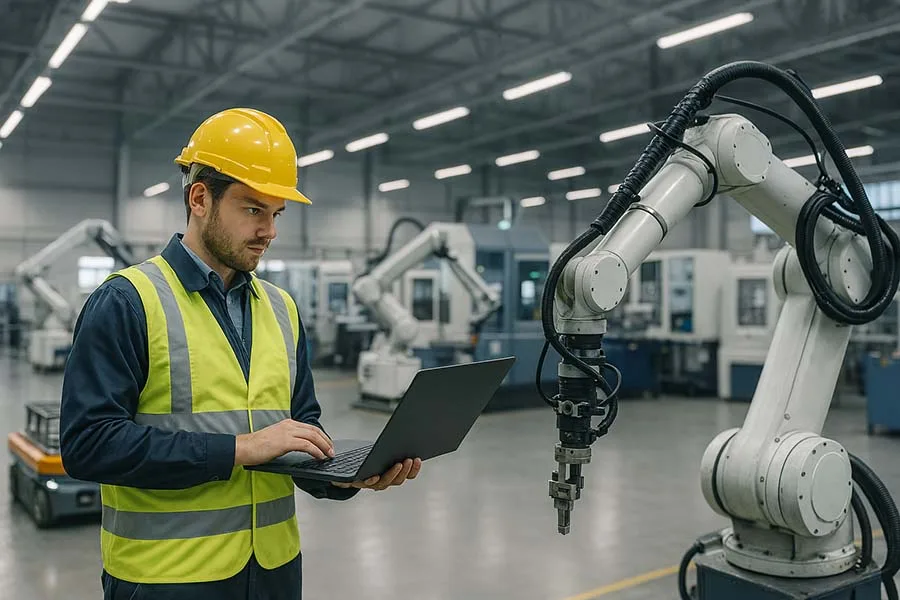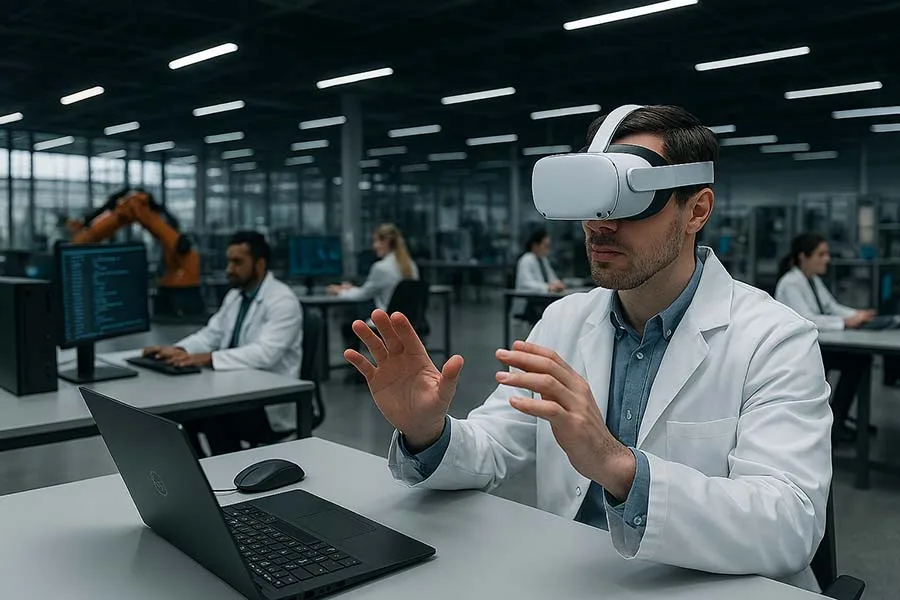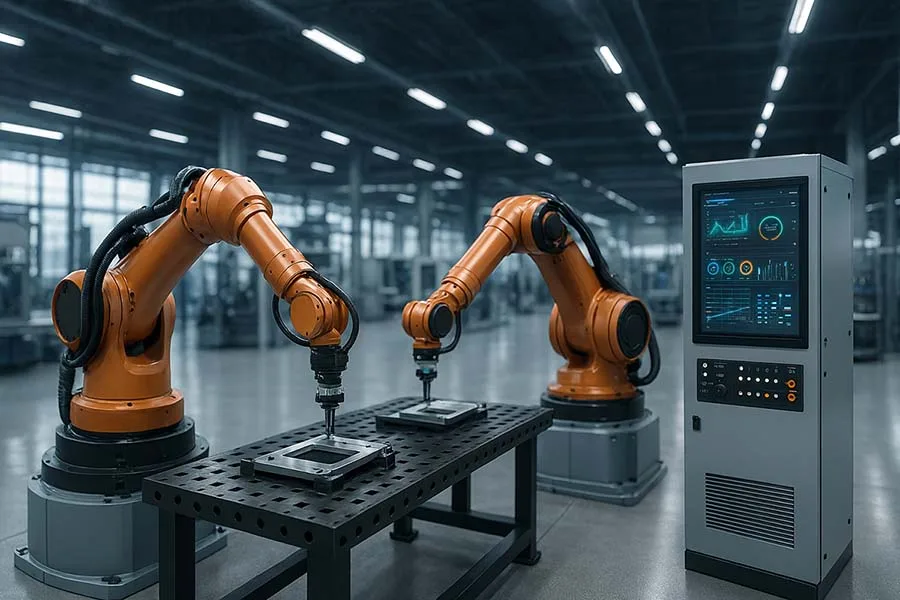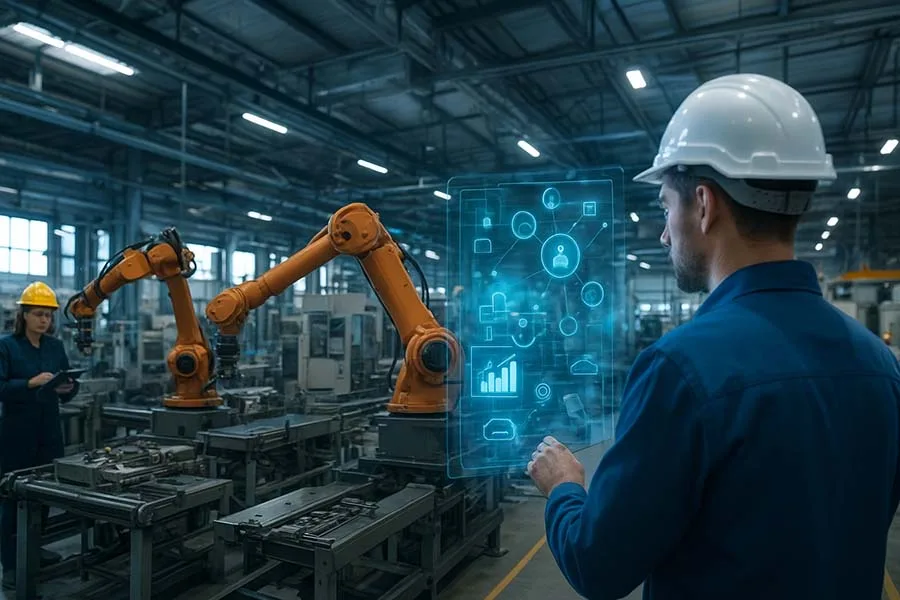Introduction
The manufacturing world is evolving once again. While Industry 4.0 transformed factories with automation, IoT, and AI, a new era is emerging: Industry 5.0. Unlike its predecessor, Industry 5.0 isn’t just about machines working faster or smarter – it’s about humans and machines collaborating seamlessly. Imagine factories where human creativity meets AI precision, where sustainability drives every process, and where technology enhances work instead of replacing it.
This article explores what Industry 5.0 is, why it matters, its key trends, benefits, and real-world applications. If you’ve ever wondered what the next decade of manufacturing will look like, you’re in the right place.
1. What is Industry 5.0?
Industry 5.0 is the next evolution of manufacturing, focusing on human-centric innovation, resilience, and sustainability. While Industry 4.0 emphasized automation and data-driven efficiency, Industry 5.0 puts people back at the center of production, blending human intelligence, creativity, and craftsmanship with advanced technologies like AI, robotics, and IoT.
Key features include:
- Human–Robot Collaboration (Cobots): Robots assist humans rather than replace them.
- Personalized Manufacturing: Mass customization to meet individual customer needs.
- Sustainability: Eco-friendly processes and circular economy integration.
- Resilience: Systems designed to adapt quickly to supply chain or production disruptions.
2. How Industry 5.0 Differs from Industry 4.0
| Feature | Industry 4.0 | Industry 5.0 |
|---|---|---|
| Focus | Automation & efficiency | Human-centric & collaborative |
| Technology | AI, IoT, big data | AI, IoT, cobots, AR/VR, edge computing |
| Production | Mass production | Mass customization |
| Sustainability | Optional | Core principle |
| Human role | Supervisor or replaced | Co-creator & collaborator |
3. Key Technologies Enabling Industry 5.0
- Cobots (Collaborative Robots): Work side by side with humans, handling repetitive or dangerous tasks while humans focus on creative or complex operations.
- Artificial Intelligence & Machine Learning: Provide insights, predictive analytics, and decision-making support for humans.
- Augmented Reality (AR) & Virtual Reality (VR): Train workers, visualize processes, and optimize production in real-time.
- IoT & Smart Sensors: Enable real-time monitoring and adaptive production lines.
- Edge Computing: Ensures faster, localized processing for immediate decision-making.
4. Benefits of Industry 5.0
- Enhanced Human Creativity: Employees can focus on innovative tasks rather than repetitive labor.
- Increased Personalization: Products can be tailored to individual customers without sacrificing efficiency.
- Sustainability: Eco-friendly materials, energy savings, and waste reduction.
- Resilience: Flexible systems adapt to disruptions, supply chain issues, or unexpected demand shifts.
- Improved Safety: Cobots reduce workplace accidents, supporting a safer environment for employees.
5. Real-World Applications
- Automotive: Customizable car interiors assembled with human-robot collaboration.
- Healthcare: Personalized medical devices and prosthetics using advanced robotics.
- Fashion & Footwear: Mass-customized shoes and apparel produced efficiently with human oversight.
- Consumer Electronics: Tailored electronics or smart devices manufactured to user specifications.
6. Challenges and Barriers
High Initial Costs: Implementing cobots and AI systems requires significant investment.
- Training & Skills Gap: Workers need upskilling to work effectively with advanced tech.
- Data Security: Increased connectivity and IoT devices can create cybersecurity vulnerabilities.
- Change Management: Shifting organizational culture from efficiency-focused to human-centric.
7. The Future Outlook
Industry 5.0 promises a more human, sustainable, and resilient manufacturing world. It doesn’t replace technology – it empowers humans. As companies adopt cobots, AI, and AR/VR, we’ll see factories that are smarter, safer, and more responsive to individual customer needs.
By 2030, Industry 5.0 could reshape global supply chains, redefine workforce roles, and make sustainability an integral part of production strategies.
The Future of Manufacturing FAQ
Further Read
- Core Foundations of Industry 4.0: The Tech Stack Explained
- Industrial Internet of Things (IIoT): Connecting Machines, Data, and People
- Digital Twin Technology: From Concept to Real-World Applications
- Robotics and Automation: The Heart of Smart Manufacturing
- Artificial Intelligence (AI) and Machine Learning: Smarter Manufacturing
- Augmented Reality (AR) and Virtual Reality (VR): The Human-Tech Interface
- Data Analytics and Cloud Computing in Industry 4.0
- Cybersecurity in Industry 4.0: Protecting the Smart Factory
- Integration and Interoperability in Industry 4.0
- Benefits of Understanding the Core Foundations: People, Processes, and Technology
- Challenges and Barriers in Industry 4.0: Overcoming the Roadblocks to Smart Manufacturing
- The Future of Manufacturing: Towards Industry 5.0





